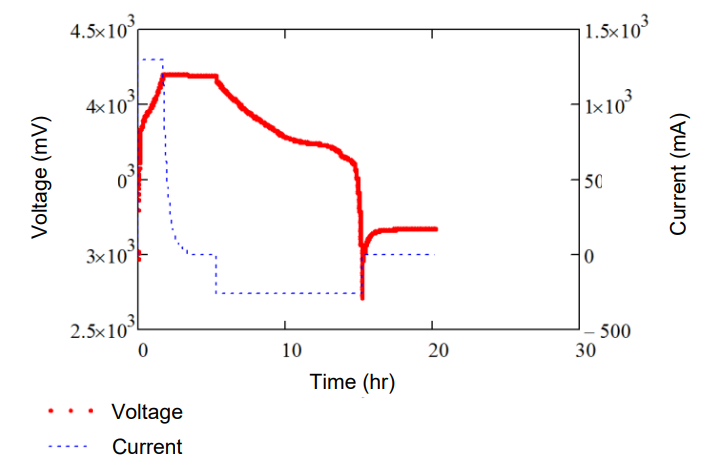SLUUCW4 November 2023 BQ27Z558
- 1
- Description
- Features
- Applications
- 5
- 1Evaluation Module Overview
- 2Hardware
- 3Software
- 4Hardware Design Files
- 5Additional Information
2.2.1 Chemical ID Selection Process Description
The test consists of the following steps:
- Test is performed at room temperature. If the cell was at a different temperature, let the cell relax for two hours at room temperature prior to the test.
- Charge using CC or CV charging to full using taper current (for example, C/100). Use nominal CC charge rate and CV voltage. If another charging method is specified by the cell maker, use that method.
- Let the battery relax for two hours to reach full equilibrium open circuit voltage (OCV).
- Discharge the battery at C/10 rate until the minimal voltage (as specified by the cell manufacturer) is reached.
- Let the battery relax for five hours to reach full equilibrium OCV.
Figure 2-2 shows an example of what this process looks like graphically.
 Figure 2-2 Graph of IV Data in Charge-Relax-Discharge-Relax
Figure 2-2 Graph of IV Data in Charge-Relax-Discharge-Relax